Headlines and events archive
Displaying 451 - 500 of 1543
You may also find an archive of news published in the media which are related with the Instituto de Astrofísica de Andalucía - CSIC.
Pages
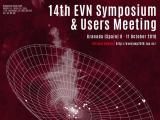
|
08/10/2018 - 11/10/2018
14th EVN Symposium & Users Meeting Granada |
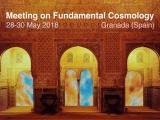
|
28/05/2018 - 30/05/2018
https://cafpe.ugr.es/fcosmology18/ Granada |

|
17/05/2018 - 12:30
The Empirical Grounds of Supernova-Gamma-ray Burst connection I will review the status of the SN-GRB connection. Present data suggest that SNe associated with GRBs form a heterogeneous class of objects including both bright and faint Hypernovae. Some of the special conditions requested by a massive star to become a GRB are discussed. Prof. Massimo Della Valle |

|
14/06/2018 - 12:30
PLATO: de cazar a domesticar sistemas planetarios Today, stellar and planetary physics enjoy an unprecedented boost thanks to space technology. From the first missions such as MOST and CoRoT, to Kepler / K2 and the recently launched TESS, hundreds of new exoplanets have been detected by photometric transits, and thousands more are to be confirmed. The main objective of these missions are to find new planetary systems, around other stars similar to our Sun. Logical detection bias due to... Dr. Juan Carlos Suárez |

|
07/06/2018 - 12:30
Physical and statistical properties of High Frequency Peaked blazars In the class of active galactic nuclei (AGNs), blazars are the most extreme objects, with their relativistic jets closely aligned to our line-of-sight. The emission of blazars is mostly non-thermal, spanning the entire electromagnetic spectrum, and is often linearly polarized providing us with important insights on the magnetic field structure. An emerging radio-loud AGN population is represented by high synchrotron peaked (HSP) blazars,... Dr. Lico |
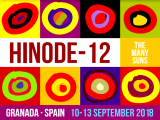
|
10/09/2018 - 13/09/2018
HINODE - 12 THE MANY SUNS Granada |

|
10/05/2018 - 12:30
Stellar activity blurring our insight into the properties of exoplanets Stellar activity can provide important information regarding the structure, evolution, and the atmosphere of the stars, as well as their magnetic filed and mechanisms that generate them. On the other hand stellar activity introduces severe astrophysical noise in the collected data in the quest for what might be called Earth 2.0. In this talk, I will present main obstacles and difficulties which stellar activity poses on the detection and... Dr. Mahmoudreza Oshagh |

|
26/04/2018 - 12:30
Lightning – from Its Base to Space Lightning has been studied for centuries with surprisingly meager progress since the early breakthroughs of Franklin. There are numerous reasons for this lack of progress: lightning is complex, it is very energetic with large peak power - hard for in-situ probes to survive, it is spatially and temporally sparse – hard to place a sensor in an optimal location. However, modern technological advances and innovations have led to new remote... Prof. Hugh Christian |

|
18/04/2018 - 12:30
Recreating the Early Mass-Loss Histories of pre Planetary Nebulae Hubble images of the amazing symmetries of young planetary nebulae have captured the imagination of the public. Scientifically, unravelling the physics of their ejection histories is the ultimate goal. I will present detailed surprisingly simple hydro outflow models that capture both the present shapes and the flow kinematics of several and very disparate nebulae. Prof. Bruce Balick |

|
13/04/2018 - 12:30
Observatorio Astrofísico de Javalambre: a dedicated facility for large sky surveys The Observatorio Astrofísico de Javalambre (OAJ) is an astronomical infrastructure conceived to carry out large sky, multi-filter astronomical surveys from the Northern hemisphere. It is fundamentally structured around two large field-of-view (FoV) telescopes and their corresponding panoramic instrumentation for direct imaging. OAJ main telescopes are the Javalambre Survey Telescope (JST/T250), a 2.55m telescope with a FoV of 3 deg diameter, and... Dr. Antonio Marín-Franch |

|
21/03/2018 - 10:00
MEGARA @ GTC: performance review and commissioning results MEGARA, the optical multi-object spectrograph (MOS) for the GTC 10m telescope, has been developed by a Consortium whose partners are UCM, INAOE, IAA-CSIC and UPM. MEGARA has 2 observing modes on sky: (a) a central IFU 12.5” x 11.3” of 567 fibers, complemented with 8 x 7-fiber bundles for sky subtraction, and (b) a MOS mode with 92 robotic positioners, covering a total FoV of 3.5' x 3.5'. MEGARA provides intermediate-to-high spectral resolution (... Dr. Jorge Iglesia |

|
21/06/2018 - 12:30
Blazar Science with POLAMI: Polarimetric Monitoring of AGN at Millimeter Wavelengths A pioneering long term program at the IRAM 30m Telescope dubbed POLAMI (Polarimetric Monitoring of AGN with Millimetre Wavelengths) observes the 4 Stokes parameters of the continuum emission at 3.5 and 1.3 mm, with a time sampling of ~2 weeks for the ~40 brighter sources in the northern sky. The XPOL polarimeter, connected to different heterodyne receiver sets, has been used since the beginning of our observations. In this talk I will introduce... Dr. Iván Agudo |

|
12/04/2018 - 12:30
The J-PAS and J-PLUS large sky surveys: an unprecedented view of the Universe in multi-colors The Observatorio Astrofísico de Javalambre (OAJ), managed and operated by the Centro de Estudios de Física del Cosmos de Aragón (CEFCA), is mostly devoted to conduct large sky multi-filter surveys with two large field of view telescopes of 2.5m and 80cm and their respective panoramic instrumentation. The main survey to be carried out in the next years is J-PAS (Javalambre Physics of the Accelerating Universe Astrophysical Survey). Conceived as a... Dr. Javier Cenarro |

|
05/04/2018 - 12:30
ESERO Spain, del espacio al aula Un proyecto de la ESA acogido en el Parque de las Ciencias para fomentar las vocaciones científico-tecnológicas en las primeras etapas educativas, haciendo uso del contexto del espacio. Manuel Roca & Domingo Escutia |

|
22/06/2018 - 12:30
What do environments can tell us about supernovae? The advent of Integral Field Spectroscopy (IFS) applied to supernova (SN) environmental studies have shown the potential of this technique to directly characterize the galactic environmental parameters at SN locations, compare them to those at different locations of the galaxy, and put constraints on progenitor stars for different SN types. Here, I will summarize past works and present ongoing efforts, including the PISCO compilation and the... Dr. Luis Galbany |

|
22/03/2018 - 12:30
Carbon Chemistry in Carbon-rich AGB stars The chemistry of carbon in evolved stars will be discussed from the observational and chemical modelling point of view. From the photosphere of the central star to the external layers of the circumstellar envelope different chemical processes allow the formation of different carbon molecules, among them carbon clusters and carbon chain radicals. The chemistry if not completely understood as many reactions are involved in the formation of... Prof. José Cernicharo |

|
24/05/2018 - 12:30
On the ultra-compact dwarf galaxy-nuclear star cluster connection Ultra-compact dwarf galaxies (UCDs) are predominatly found in the cores of nearby galaxy clusters, regions that are dominated by early-type galaxies, among them nucleated dwarf ellipticals. One of the favourite scenarios for the origin of UCDs is that they are isolated nuclei from threshed dwarf galaxies or maybe also from disrupted late-type spiral galaxies that fell into the clusters. In this scenario one would expect to find super... Dr. Michael Hilker |
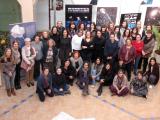
|
30/01/2018
International Day of Women and Girls in Science The Institute of Astrophysics of Andalusia joins the celebration of the International Day of Women and Girls in Science, which seeks to make visible the scientific work of women and promote vocations in girls |

|
15/02/2018 - 12:30
Can CALIFA tell us something about the cosmic evolution of the star formation rate and stellar mass of the Universe? We investigate the cosmic evolution of the absolute and specific star formation rate (SFR, sSFR) of galaxies as derived from a spatially-resolved study of the stellar populations in a set of nearby galaxies from the CALIFA survey. The results show again the uniqueness of the CALIFA survey to characterize the cosmic evolution of the spatially- resolved SFR and stellar mass of galaxies. Also the success of the fossil record of the stellar... Prof. Rosa González |
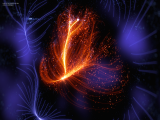
|
15/03/2018 - 12:30
Navigating the Universe : « Cosmic Flows » program I will present the evolution of the “Cosmic Flows” program spanning ten years of research since its inception in 2006. From CF1 to the latest CF3 data-set, an order of magnitude in the number of observational galaxy distances is gained, meanwhile the cosmographied volume is multiplied by 150. A theoretical framework has been developed so as to accommodate and analyze the data. This includes the Bayesian reconstruction tools of the Wiener filter... Professor Hélène Courtois |

|
07/03/2018 - 12:30
Mesa redonda: "Luces y sombras en la carrera científica de las mujeres. Hacia una igualdad efectiva entre hombres y mujeres." Componentes de la mesa: Laly Gallego, contratada predoctoral Marta González, contratada postdoctoral Rosa González, primera profesora de investigación del IAA Rosa de Castro, gestora de proyectos europeos Nuria Rico, profesora de la ETS de Ingenierías Informática y de Telecomunicaciones de la UGR. Lucia Estevan, contratada FPU de la UGR y activista de la plataforma @huelga8mgranada Coordina: Isabel Márquez, vicedirectora del IAA Mesa redonda |

|
22/02/2018 - 12:30
LIGHT AND SHADOW IN THE GALACTIC CENTER The luminous S-star cluster in the Galactic center allows us to study the physics close to a super-massive black hole including distinctive dynamical tests of general relativity. Our best estimates for the mass of and the distance to Sgr A* is currently obtained using the three shortest period stars. Additionally, we aimed at a new and practical method to investigate the relativistic orbits of stars in the gravitational field near Sgr A... Prof. Andreas Eckart |

|
25/01/2018 - 12:30
Diffuse Ionized Gas in CALIFA (and MaNGA) galaxies We use spatially resolved spectroscopy from the CALIFA survey to study the nature of the line emitting gas in galaxies of different Hubble types, focusing on the separation of star-forming (SF) regions from those better characterized as diffuse ionized gas (DIG). The diagnosis is carried out in terms of the equivalent width of Ha (W_Ha). Three nebular regimes are identified: (1) Regions where W_Ha... Dr. Roberto Cid Fernandes |
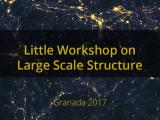
|
20/11/2017 - 24/11/2017
Little Workshop on Large Scale Structure Granada |

|
18/01/2018 - 12:30
Dust belts around Proxima Centauri. First results from a multi-department project at the IAA In this talk I will present the results of an exploratory program we carried out at the ALMA Observatory soon after the discovery of a terrestrial planet candidate in a temperate orbit around Proxima Centauri, the star closest to our Sun. Our ALMA observations reveal the presence of a belt of dust orbiting the star at distances ranging between 1 and 4 au, approximately. This dust might trace a small-scale analog to our solar system's Kuiper Belt... Dr. Guillem Anglada |

|
16/11/2017 - 12:30
Surprising characteristics of the dwarf planet Haumea revealed by a stellar occultation The solar system currently contains 8 planets and 5 dwarf planets. Among the 5 dwarf planets, 4 of them dwell in the transneptunian region, and among the transneptunian dwarf planets, the only one that remained poorly characterized was Haumea. This was because all other dwarf planets had been visited by spacecraft or had produced stellar occultations which allowed us to determine some of their basic physical properties with accuracy. The only... Dr. Jose Luis Ortíz |

|
16/10/2017 - 20/10/2017
Astrorob 2017 - Fifth Workshop on Robotic Autonomous Observatories Mazagón (Huelva) |

|
30/11/2017 - 12:30
GRB 170817A: a peculiar low-luminosity short gamma-ray burst associated with a NS-NS merger gravitational wave signal Short-duration gamma-ray bursts (sGRBs) have long been proposed to be produced in systems involving the coalescence of double neutron stars (NS-NS), and the observations of sGRB afterglows and host galaxies are consistent with such a conjecture. Based on the estimated event rate density derived from previously observed sGRBs at cosmological distances, the chance of detecting a sGRB within a small volume for detectable NS-NS mergers by advanced... Dr. Binbin Zhang |

|
02/11/2017 - 12:30
W170817/GRB 170817A/AT2017gfo: A Tryptich of Rosetta Stones for Compact Object Astrophysics On the 17th of August 2017, an astronomical event occurred which represents a watershed in our understanding of neutron stars. The LIGO and Virgo gravitational-wave observatories detected the first compact binary inspiral produced by two neutron stars, which was followed about two seconds later by a short GRB, labelled GRB 170817A, detected by the GBM instrument on Fermi. The detection by all three GW observatories allowed the error region to be... Dr. David Alexander Kann |

|
11/01/2018 - 12:30
Dynamics and properties of gas at the Center of the Galaxy In the central parsec of the Milky Way Galaxy the environment of the super-massive black hole (SMBH) presents a complicated composition that includes a very young star cluster mixed with qby tidally stretched clouds of ionized gas (the Minispiral). The Galactic Center's inner few tens of arcseconds have been observed at high resolution with Keck for 20 years, with the primary goal of monitoring stars orbiting the SMBH. This unique baseline of... Dr. Anna Ciurlo |

|
19/10/2017 - 12:30
Bringing science to kids and general public at the Observatoire de la Côte d'Azur It is important to transmit the science developed in a research institution to the public. This transmission helps to increase the scientific culture of the general public, and also can help to awake scientific vocations in the kids. During this talk I will present several actions carried out at the Observatoire de la Côte d'Azur (Nice, France), to bring astronomy to the school children and also to the general public. I will talk about the... Dr. Olga Suarez |

|
26/10/2017 - 12:30
The Supernovae that Accompany Gamma-ray bursts Energetic supernovae have been seen to occur at the same spatial locations as long-duration gamma-ray bursts (GRBs). These so-called gamma-ray burst supernovae (GRB-SNe) are bright and energetic, and their spectra indicate that material within in the supernova outflow moves at tens of thousands of kilometres per second. The first GRB-SN was observed in 1998, with only 50 in the intervening years. Over the past two decades, the physical... Dr. Zach Cano |

|
05/10/2017 - 12:30
Dust evolution in the interstellar medium Dust grains play a crucial role in many physical and chemical processes in the interstellar medium (ISM) and in protoplanetary disks (PPDs). In the ISM, dust properties influence, for example, the formation and temperature of the major molecules in molecular clouds. It is therefore important to characterise the grain size, structure, shape and material composition in all phases of the ISM. Observations of the dust SED and extinction give... Dr. Melanie Köehler |

|
23/11/2017 - 12:30
Fighting in Maya ruins: Data Engineering, Data Science, computation clusters and the trans-neptunian search tool IAA is sitting under a gold mine of data, achieved in past observing campaigns, that will be increased with the data coming from next instrumentation. A tool that can exploit the wealth beneath our feet is the Engineering and Data Science (EDS). This lecture will introduces the EDS and its application on preliminary analysis on a concrete astronomical problem: the search of trans-neptunian objects. Two of the tools used in this analysis will... Dr. Rafael Morales |

|
09/11/2017 - 12:30
Conclusions after the first work of Master's degree in Data Science at the IAA Advanced algorithms of automatic learning and/or massive data processing, applied to astronomical data, promise to provide very pleasant surprises. Both types of algorithms are part of the field of Data Science research. Taking advantage of the fact that Granada has a worldwide reference group in Data Science (Soft Computing and Intelligent Information Systems http://sci2s.ugr.es/, directed by Francisco Herrera), a collaboration with the IAA... Dr. Rafael Morales |

|
27/09/2017 - 12:30
High-z proto-clusters with the GTC The study of high-z proto-clusters are important for constraining several cosmological parameters. These clusters are hard to find as they do no yet emit the strong X-ray emission typical of the local clusters. These proto-clusters are however found either around strong QSO’s or more often around strong star-forming galaxies. Incidentally, they are also found around strong sub-millimetre galaxies. We have undertaken a search for Lyα sources... Prof. Jose Miguel Rodríguez-Espinosa |
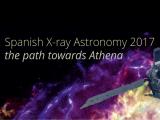
|
23/10/2017 - 25/10/2017
Spanish X-ray Astronomy 2017: the path towards Athena Granada |
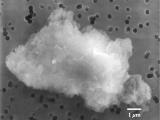
|
25/09/2017 - 28/09/2017
Dust and Ice Particles Spectroscopy and Scattering Granada |

|
16/10/2017 - 12:00
SKA Science Data Centres: A Platform for Global Astronomy M. Wise: The SKA is an ambitious project to construct one the world’s more powerful radio telescopes and enable transformational science across a wide range of research areas. Based on current projections, the SKA Observatory, once operational, is expected to produce an archive of standard data products with a growth rate on the order of 300 petabytes per year. Although the challenges associated with populating and maintaining the SKA science... Prof. Michael Wise & Prof. Ian Wird |

|
21/09/2017 - 12:30
Analogue spacetimes Analogue spacetimes, (as opposed to general relativity spacetimes), arise when applying the mathematics of differential geometry to generic physical systems. As long as the perturbations have finite propagation speed, then the causal structure can be summarized by propagation cones, similar to the light cones of general relativity; thereby defining a conformal structure. Often one can go further and define an analogue Lorentzian metric.... Prof. Matt Visser |

|
14/09/2017 - 12:30
Hydrodynamical models of planetary nebulae with [WC] central stars High-resolution, long-slit spectroscopic observations of two planetary nebulae, M1-32 and M3-15 are presented. The observations were obtained with the 2.1-m telescope at the OAN- SPM, and MES spectrograph. M1-32 shows wide wings on the base of its emission lines, M3-15 has two very faint high-velocity knots. To model M1-32 and M3-15 we built a 3D model consisting in a jet interacting with an equatorially concentrated slow wind, emulating the... Jackeline Rechy Garcia |

|
07/09/2017 - 12:30
High resolution radio imaging of nearby star-forming galaxies: on the way to SKA The Square Kilometer Array (SKA) will be a key instrument in the study of our local Universe. In particular, by virtue of its high sensitivity (both to point sources and diffuse low surface brightness emission), angular resolution and the frequency ranges covered, the SKA will undertake a very wide range of astrophysical research in the field of nearby galaxies. By surveying nearby galaxies of all types with microJy sensitivity and sub-arcsecond... Prof. Antxon Alberdi |

|
04/10/2018 - 12:30
The European VLBI Network (EVN) and user cases to improve your science The European VLBI Network (EVN) is a network of radio telescopes located primarily in Europe and Asia, with additional antennas in South Africa and Puerto Rico. The combination of such extended network of telescopes provides an extremely high angular resolution (down to milliarcsecond scales). In addition to that, and given its unparalleled sensitivity on this type of observations, the EVN becomes a genuine instrument to observe an enormous... Dr. Benito Marcote |

|
11/05/2017 - 12:30
The Early History of Gamma-ray Bursts The discovery of Gamma-Ray Bursts (GRBs), and the subsequent realization that they are the result of the largest and most distant explosions in the Universe, represents one of the most surprising and fundamental discoveries in astronomy in the past century. Several space-borne and ground-based breakthrough observations in GRBs that led to this realization occurred during the 1990’s. This discovery resulted in the award of the 2011 Shaw Prize... Prof. Gerald J. Fishman |

|
28/04/2017 - 12:30
Gravitational waves: the "other light" from Cosmos First direct detections of gravitational waves were reported in the first half of 2016. These observations represented: i) a confirmation of a fundamental prediction of General Relativity dynamics, and ii) a demonstration of the existence of binaries of stellar-mass black holes capable of merging in a timescale shorter than the Universe's age. This talk will review the basic elements needed to frame the two statements above. The presentation... Prof. J.L. Jaramillo |
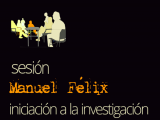
|
19/04/2017 - 12:00
Te espían, te estudian y te controlan: dale importancia a tu privacidad en la red Esta charla va a tratar sobre conocimientos básicos que deberías tener para proteger tu privacidad cuando navegas por Internet. ¿Qué es la privacidad en la red? ¿Por qué debería importarnos? ¿Cuánta información producimos? ¿En qué sentido nos hace vulnerables? "¿Qué más da que me vigilen si no hago nada malo?" ¿De quién debemos defendernos? ¿Qué herramientas tenemos para ello? ¿Quién está de nuestro lado? José Alberto Orejuela García (Universidad de Granada) Salón de Actos del Instituto de Astrofísica de Andalucía (IAA-CSIC) |

|
18/05/2017 - 12:30
Bombs and flares at the Surface and Lower Atmosphere of the Sun A spectacular manifestation of solar activity, is the appearance of transient brightenings in the far wings of the H(alpha) line, originally known as "Hydrogen bombs” but now as "Ellerman bombs" (EBs) after their discoverer. Recent observations obtained by the Interface Region Imaging Spectrograph (IRIS) have revealed another type of plasma ``bombs'' (UV bursts) with high temperatures of perhaps up to 80 000 K within the cooler lower solar... Prof. Viggo Hansteen |
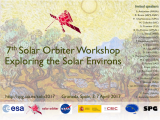
|
03/04/2017 - 07/04/2017
7th Solar Orbiter Workshop Granada |

|
29/06/2017 - 12:30
An overview of the first science from the Sunrise II mission On June, 2013, a second edition of the Sunrise stratospheric, balloon-borne mission took place from Kiruna (Sweden) to Northern Canada. During these five days, the instruments aboard Sunrise were observing the Sun for long periods of stable conditions. New and interesting science has come out from this second flight, which has been published in a special issue of ApJ Supplement. In this talk, I’ll summarize a bunch of these first results to... Dr. Jose Carlos del Toro Iniesta |

|
25/05/2017 - 12:30
The Faint End of the HI Mass Function Low-mass galaxies are the most numerous type of extragalactic system at all epochs of the universe. The population of low-mass galaxies in the local volume allows unique astrophysical and cosmological perspectives that are unavailable in more distant or more massive systems. The ALFALFA blind extragalactic HI survey has cataloged tens of thousands of gas-rich galaxies in the local universe and has populated the faint end of the HI mass... John Cannon |